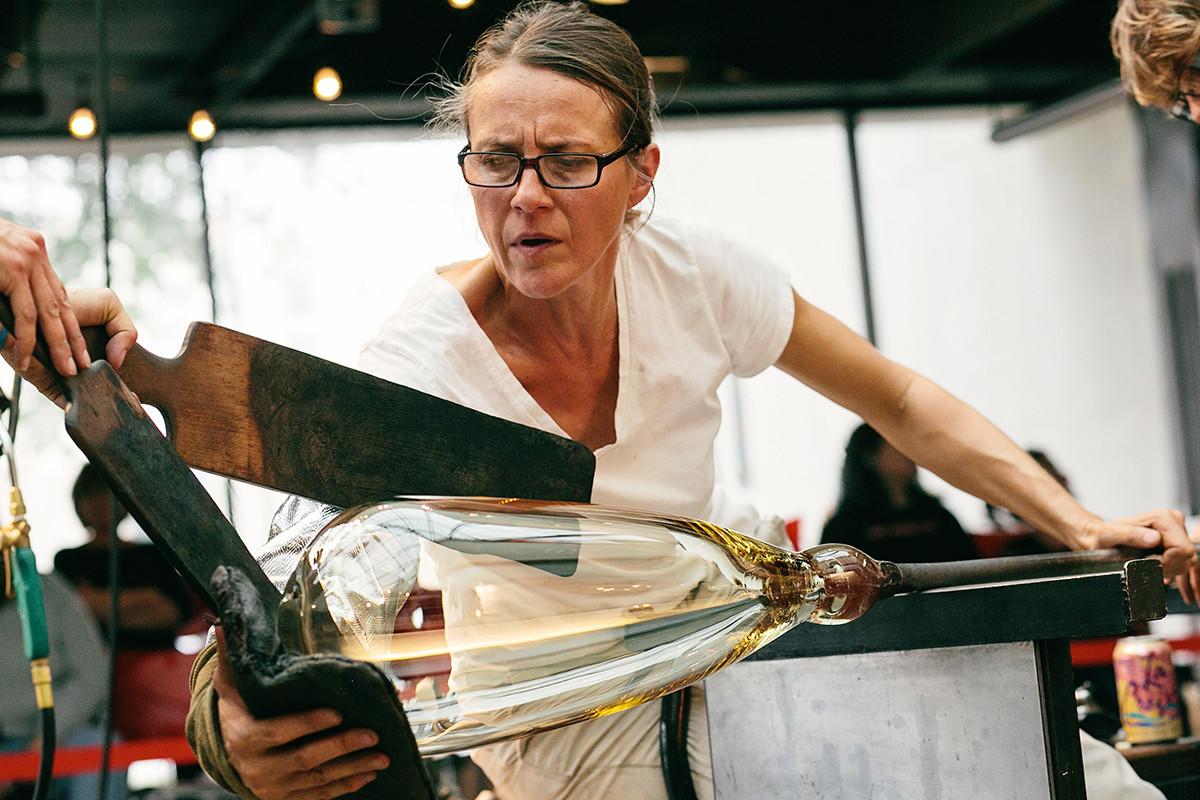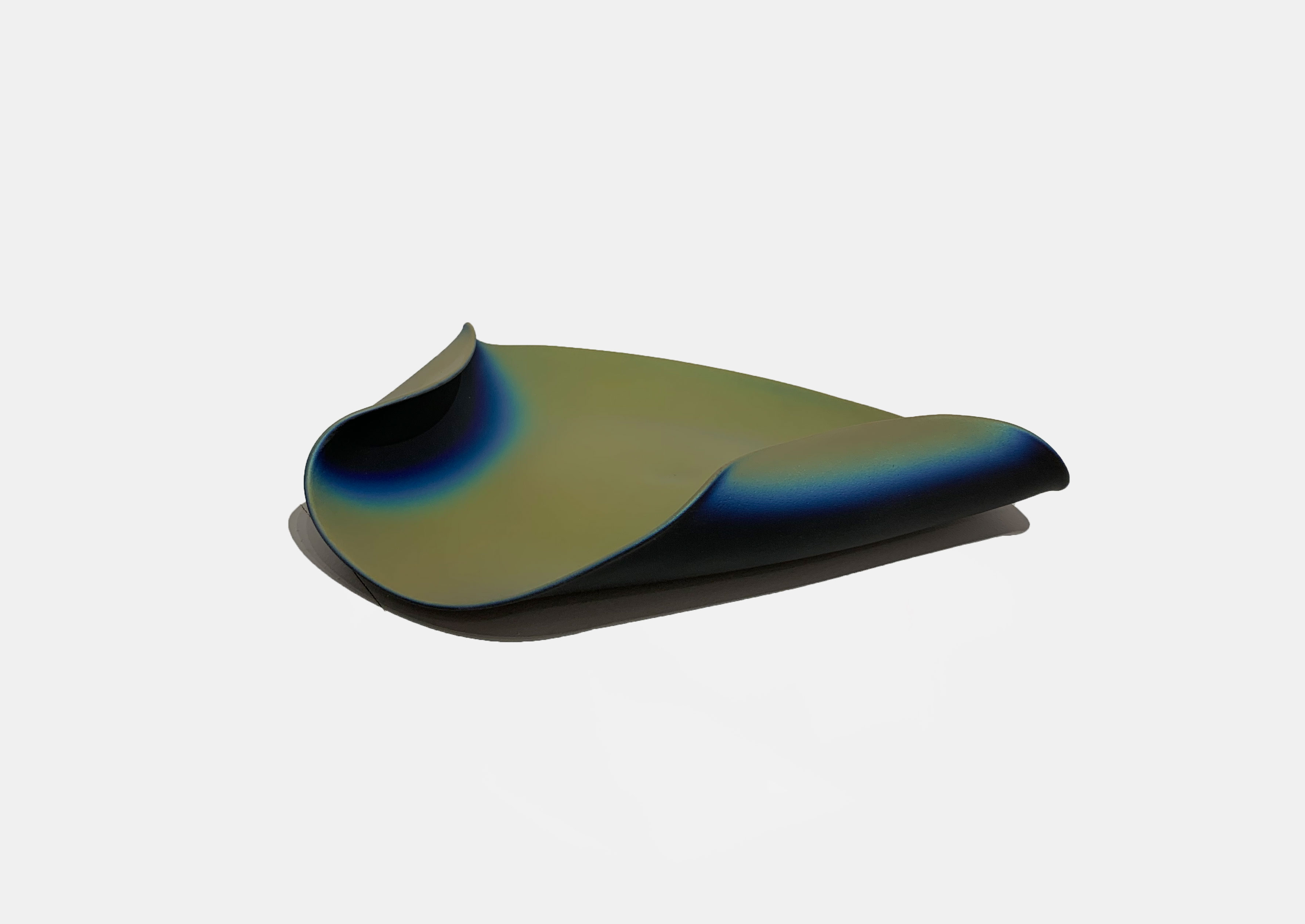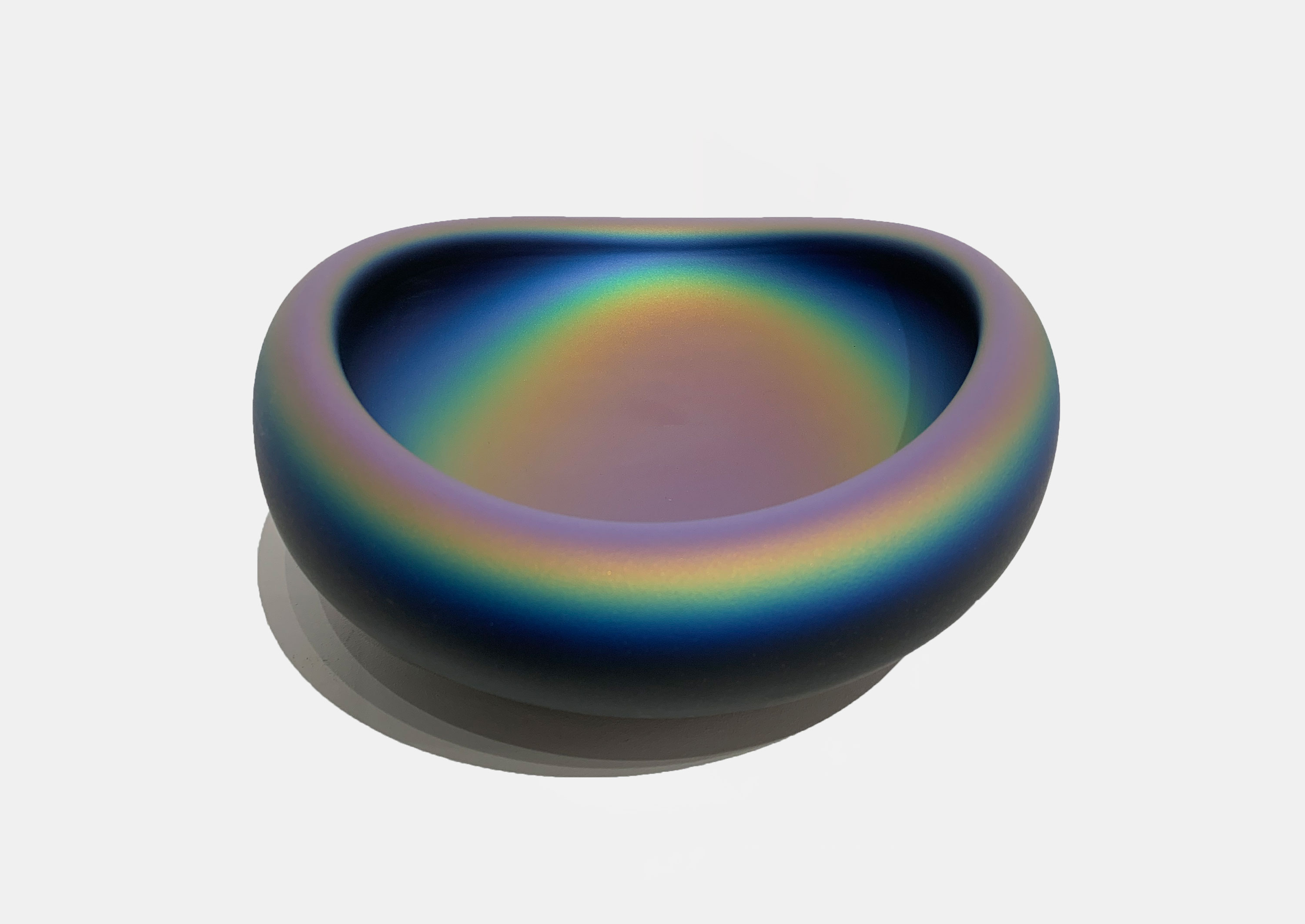
Interview with Katherine Gray
For Artist Katherine Gray, glass, her chosen material, offers both the familiar and the otherworldly. With a career that has produced blown glass sculptures to found-art works, Gray continues to create magic within one of the world’s oldest forms of craftsmanship. According to the artist, “my work is about disappearance of some sort and I use glass as an embodiment of that notion. I use a material that we don’t generally ‘see’; [glass] is both known and unknown, quotidian and transcendent at the same time.” Gray, academic and prolific artist as well as the eminent judge on television’s Blown Away, shared her thoughts with us as her ethereal new bowl collection touches down at The Future Perfect.

As a starting point, why did you - and continue to do - gravitate towards glass as a medium?
The actual process of glassblowing is what compelled me in the beginning, the physical challenges along with the fact that glass is a material like no other and sometimes even the pieces that don't require a lot of skill still have a beguiling beauty about them. As I've matured, I'd like to think that my work has matured, and now I see many more analogies within glass, its incarnations, its history, its properties, that have relevance to larger issues in the world.
Your work on Blown Away is just one more indicator that glass blowing and talking continues to resonate with makers and buyers. Can you talk us through this experience?
On Blown Away, I'm the resident evaluator, one of three judges for each challenge. In a lot of ways, it's similar to what I do when I'm teaching, checking in on the progress of artworks, talking about how to overcome technical challenges, and lastly, critiquing artwork and addressing how well the work is accomplishing the artist's goals. Obviously, the stakes were higher on set, for the artists and for me. Luckily, there was always three voices (myself, the host, Nick Uhas, and the guest judge) for each challenge and we would have some spirited discussions (usually off-camera!) There was a lot more dialogue around the artworks and with the glass artists than what made it to the final edit naturally, and overall, I think the producers did a fantastic job of showing the majesty of artists at work, in a glassblowing studio.
At The Future Perfect, we very much see glass as a medium for art, as opposed to decoration. Are there challenges to working in the medium in terms of perception?
There are definitely challenges in perception for using glass. It has traditionally been used as a functional or decorative material, for centuries, and its use as an art material really only started in the middle of last century. That's not that long ago, and a really short timeframe to make up for lost time, if you will. There are a lot of artists whose work references the functional or historical precedents of the material (I would count myself here), and then there are artists who are creating a new paradigm. I find that the nod to a recognizable glass vocabulary can make the work accessible, opening a door to other interpretations for the viewers.
You’re known for pushing the limits of the material in both an intellectual and structural sense… what are some of the boundaries you’re interested in crossing with your work?
One thing I try to do with my work is to make the glass as a material, in whatever form, be apparent. There are so many ways we interact with glass that we don't really pay attention to: we look through windows, not at them; it often holds our beverages but is merely a carrying vessel; it's a decorative addition to the decorative addition that are flowers in a vase; and most ubiquitously these days, it drives the technology behind touch screens and smart devices (where we may only become aware of the presence of glass when our screens crack). My efforts to foreground the material are meant to highlight that something that we don't really 'see' mediates so many of our everyday experiences.

The iridescent glass you create for The Future Perfect has an ethereal quality to it. Can you speak about the process?
The ethereal quality is a result of some experiments in trying to get an iridescent surface on the glass. There are some glass artifacts that have an iridescence achieved from being buried for centuries- metal oxides on the surface of the glass react with minerals in the soil. To achieve a similar effect, I am using a technique initially developed by NASA for use in windows on rockets. I love the fact that it's quite literally a space age technique but that mimics a surface seen on 5000 year old glass. I try to make forms that capitalize on this technique, showing the different colors seen from different angles, so much so that sometimes you cannot pinpoint exactly what color the glass is. In that moment, it is mutable and unknowable, an analogy for glass itself.
 The Future Perfect
The Future Perfect





